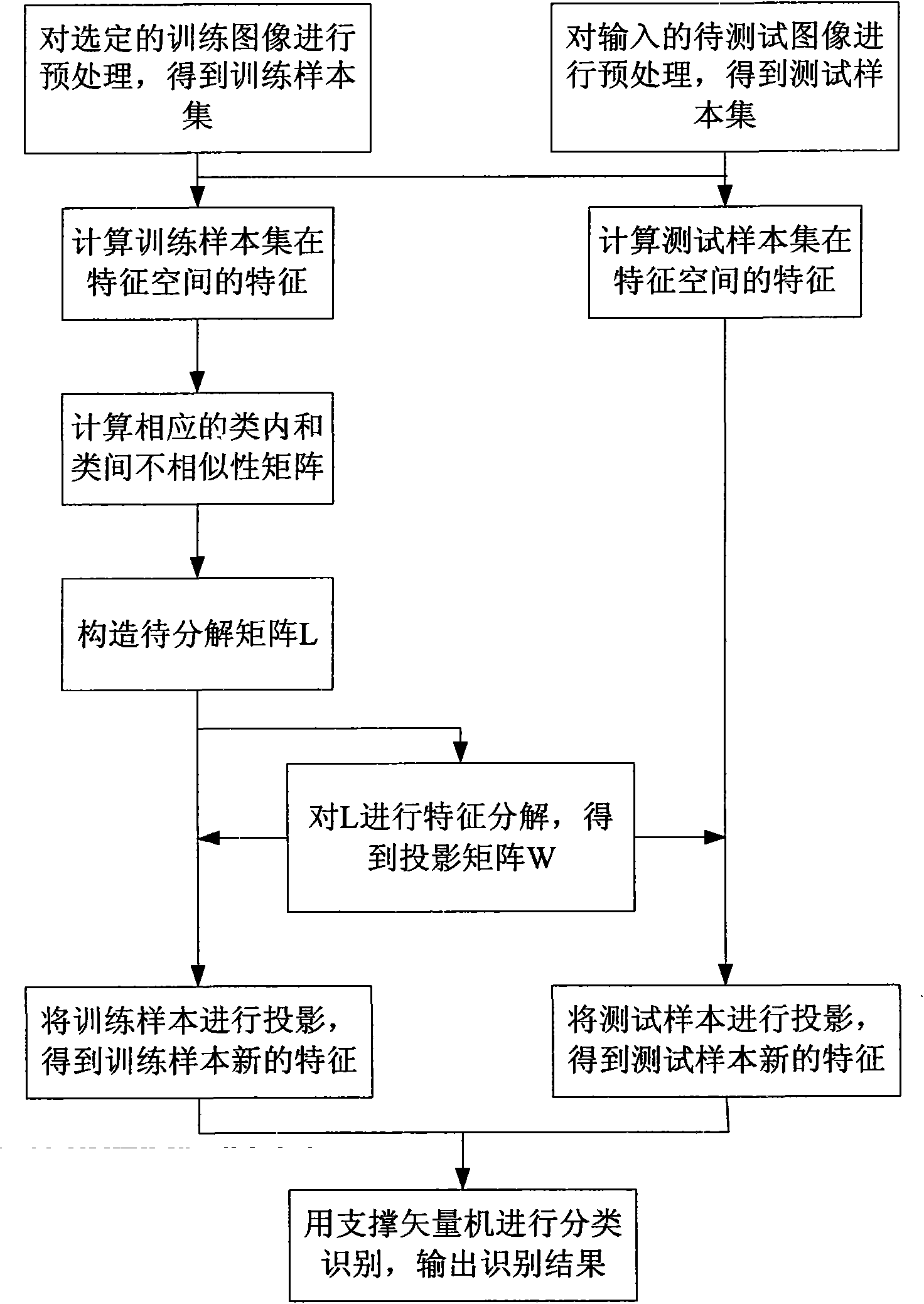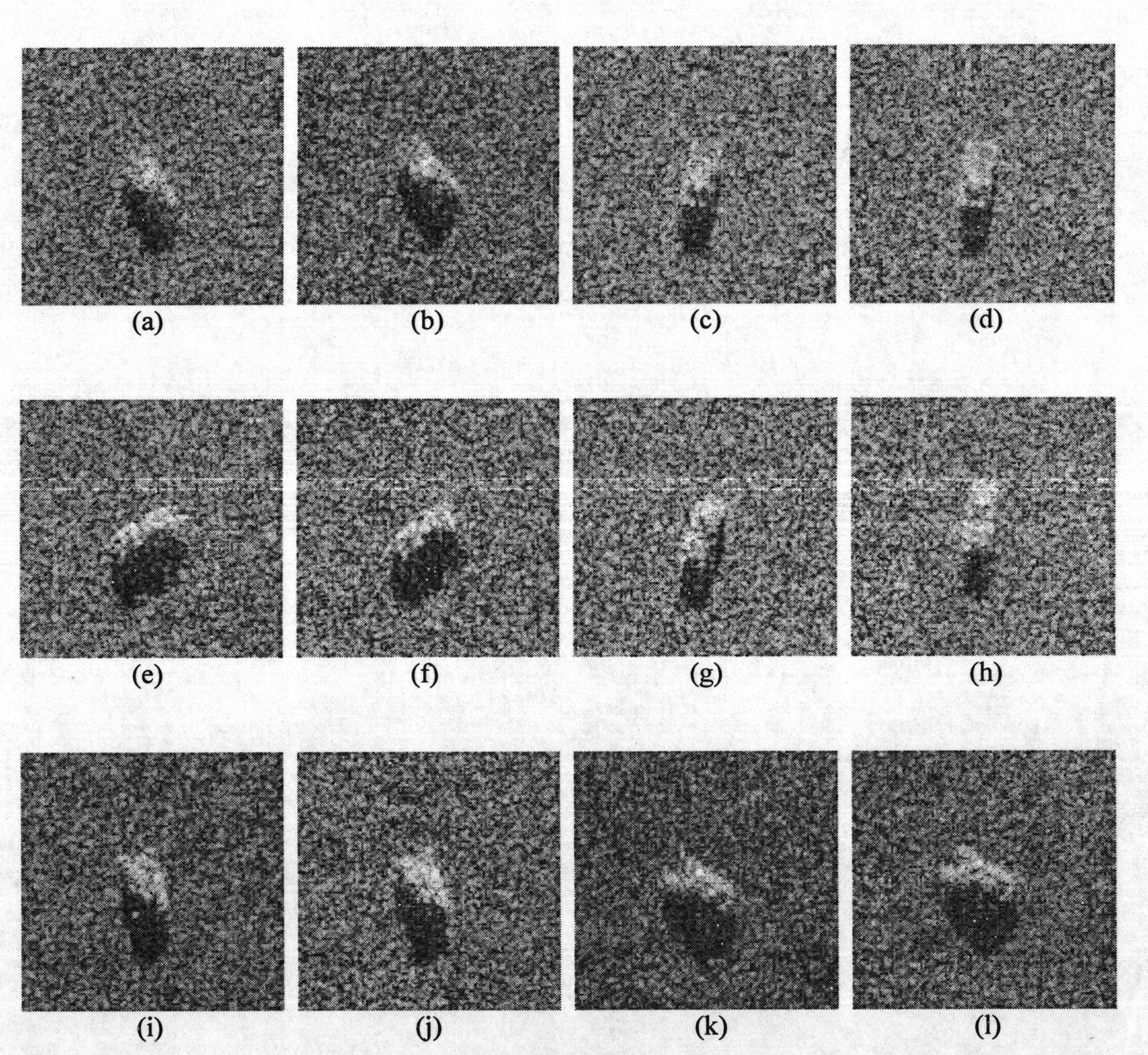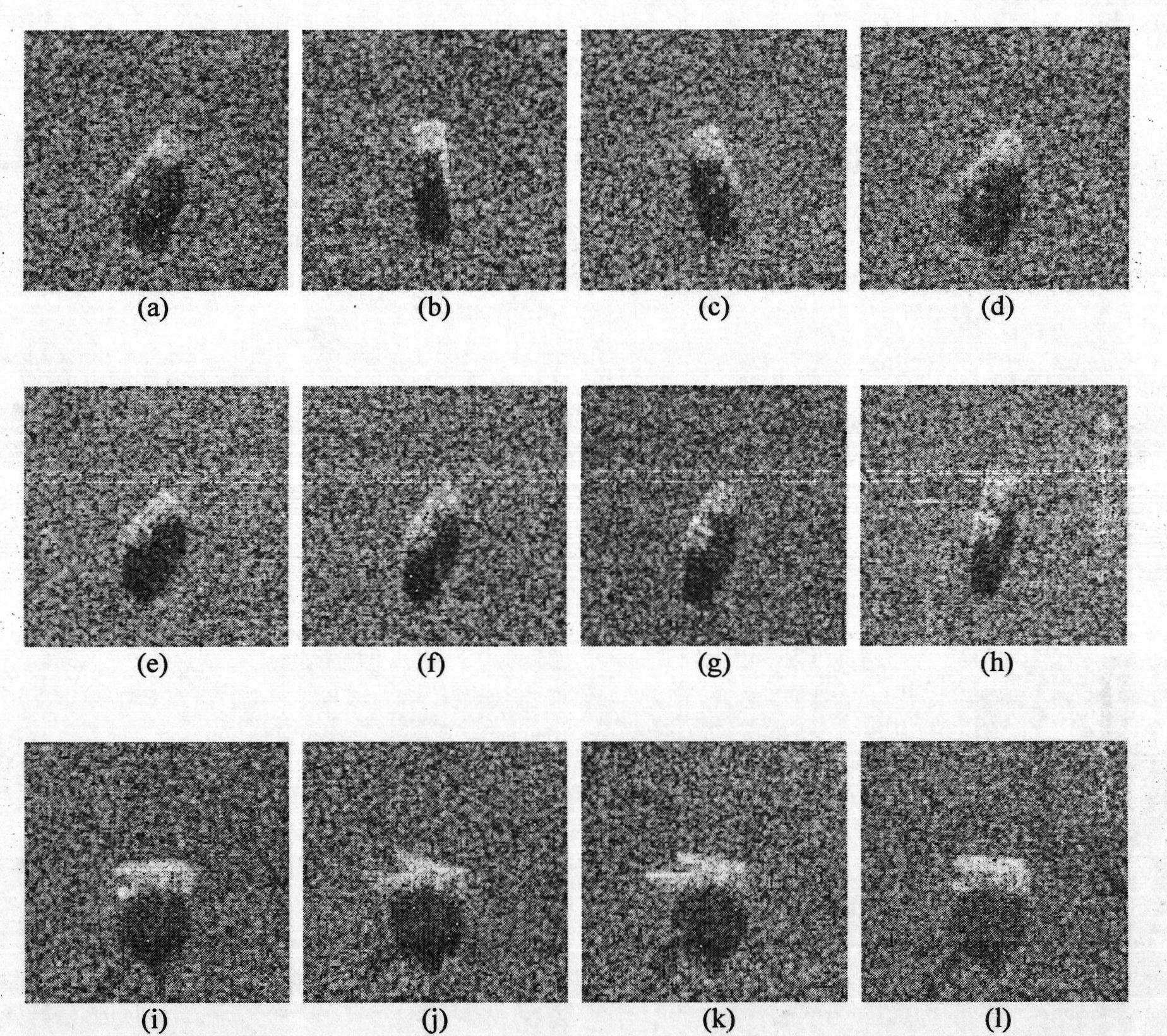SAR (Synthetic Aperture Radar) image target recognizing method based on nuclear scale tangent dimensionality reduction
A technology of synthetic aperture radar and dimensionality reduction, applied in the field of image processing, can solve problems such as limiting the application of Fisher discriminant analysis and Fisher linear discriminant analysis
- Summary
- Abstract
- Description
- Claims
- Application Information
AI Technical Summary
Problems solved by technology
Method used
Image
Examples
Embodiment Construction
[0034] refer to figure 1 , the specific implementation steps of the present invention include:
[0035]Step 1, preprocessing the training images to obtain the preprocessed training sample set.
[0036] 1a) Select the image with a 17° overlooking angle in the MSTAR database as the training image set, such as figure 2 shown, where figure 2 (a), figure 2 (b), figure 2 (c), figure 2 (d) is a BMP2 armored vehicle with different azimuths, figure 2 (e), figure 2 (f), figure 2 (g), figure 2 (h) is a BTR70 armored vehicle with different azimuths, figure 2 (i), figure 2 (j), figure 2 (k), figure 2 (l) is a T72 tank with different azimuths;
[0037] 1b) Cut out a sub-image of 60×60 in the center from the selected 128×128 original image;
[0038] 1c) Normalize all the sub-images respectively. Commonly used normalization methods include standard deviation normalization, 2-norm normalization, maximum value normalization and mean value normalization, etc. The prese...
PUM
 Login to View More
Login to View More Abstract
Description
Claims
Application Information
 Login to View More
Login to View More - R&D
- Intellectual Property
- Life Sciences
- Materials
- Tech Scout
- Unparalleled Data Quality
- Higher Quality Content
- 60% Fewer Hallucinations
Browse by: Latest US Patents, China's latest patents, Technical Efficacy Thesaurus, Application Domain, Technology Topic, Popular Technical Reports.
© 2025 PatSnap. All rights reserved.Legal|Privacy policy|Modern Slavery Act Transparency Statement|Sitemap|About US| Contact US: help@patsnap.com



